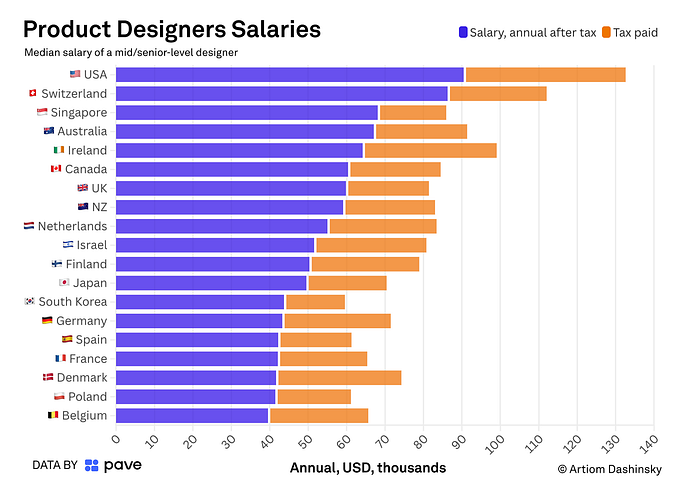A good example of a bad experience — the user journey
Let me share a recent experience to illustrate why I think we need to get better at designing products and services with the user journey in mind. You won’t find any user journey maps or charts in this article, just a story of my experience as a user. A true story. A rant. A true rant, based on a true story.

I think there are way too many services out there that have been designed and built without the understanding of the full journey that users have to go through to achieve their goals. I see how organisations focus so hard on being good organisations, having the right tribes, agile teams, and following methods and systems, that their designers and developers end up in small groups, designing and building small parts of a large service. They don’t have an overview of all user touch points, they build organisational silos and create confusion and insecurity amongst their users.
Background — How I became a user on a journey
I’m out cycling and I’ve had some issues with my freehub making strange sounds, and through warranty I’m getting a new freehub sent to me. Great service! What a freehub is and how it works is irrelevant (in this story), but it’s pretty important to have one that works, if you want to be able to ride your bicycle.
So because I’m out cycling, I arrange for the manufacturer to send the freehub to my friend, who I’m about to visit. So long everything is fine. Then the freehub manufacturer outsources the shipping to a delivery company. Let’s give them a fictional name, this is not a piece of public shaming, this company is not alone in failing to design coherent services. Let’s call them Fed Up.
Fed Up has to pick up the freehub from the manufacturer, transport it from France to Belgium, and drop it off at my friends house at a date and time we’ve agreed to, so that my friend can be there and receive it. They also have to keep me in the loop, something that they do digitally.
Touch points — How I interact with the service
My first touch point with Fed Up is when the manufacturer sends me an email with the tracking code. I soon get an email from Fed Up, with the most recent delivery status, the parcel is to be delivered tomorrow. Then I get another email from Fed Up, with a big button saying Manage Delivery. It explains that I can manage my delivery up to 24 hours before delivery.
I do want to manage my delivery since I need to make sure it gets delivered when my friend is at home, so we agree on a date and time and I click the big button to sort it out. I’m instantly met by a pop up, that I assume is asking me to accept cookies, so I decline as I usually do.
Before I know what has happened, I’m on the Fed Up website with a big yellow text box telling me I’ve removed the phone number and text message notification for the delivery. It also informs me that if I’ve changed my mind and do want text message notifications, I need to call customer service.
Silos — How I first get frustrated
I do want Fed Up to have my friends phone number, so that they can call when they’re there to deliver. I call customer service. I get through the answer phone and end up in a queue. After a few minutes it hangs up on me. I try again, the same thing happens.
I try a third time and the answer phone suggests that I try the online chat instead, it’s faster and easier. I get online and chat with a customer service representative. The customer service representative tells me that unfortunately she can’t add the number to the delivery. She tells me I need to email a specific department within customer service. I email that department.
The next day I get an email back explaining that this particular department has an extreme workload at the moment, and because I’ve emailed them, my delivery will be delayed significantly. The email ends with a question, if I still want them to help me with the issue I had. I don’t reply.
I can see the silos in the organisation, different departments dealing with different things that make sense to them, based on how their company works. For me however, the issue is, and has always been about the phone number, and I’m starting to feel as if I’m talking to different companies.
Insecurity — How I start doubting Fed Up
Shortly I get an email from Fed Up saying that my new estimated delivery is going to be a week later. I know that the new time isn’t going to work, since my friend will be at work. I go back to my Manage Delivery button to change the time of my new delivery, but I’m met with the red text saying it’s too late to manage delivery, since the delivery is going to be in a couple of hours. Doesn’t it know that my delivery has been delayed?
I feel insecure, I’m no longer sure that the new delivery time is right, and if it is, I want to change it, but I’m not sure I can get in touch with anyone who can help me. I know I have to do something, but I just don’t know where to start? I ignore the problem for a while.
Confusion — How I reach a conclusion
Early morning the next day I receive an email from Fed Up saying they’ve changed the delivery date again, to 6pm yesterday. I don’t know how they’re going to manage that, but assume it’s a misstake. Then, later that day I get a text message from my friend, saying the parcel has been delivered. I doubt it. I haven’t heard from Fed Up, but my friend insists. The parcel is there.
I feel no satisfaction in knowing that my parcel has arrived, instead I’m suspicious and expect to find out that something has gone wrong. I feel as if I’ve just talked to five different people about five different things, and I’ve already forgotten why I contacted them in the first place. I have a feeling that Fed Up are trying to mess with me, because all I see is one logo and one company. I’ve probably had 10 different touch points, but as I’m sitting here as a confused and insecure user, I realise that I don’t care about touch points.
Touch points don’t matter
I don’t care about departments, about internal organisational structures. I don’t need to know that another department is going to help me, or that I need to email or call a particular number. I see one company, and this mishmash of touch points paints a picture of incoherence, ignorance and inconsistencies.
As anyone who plays a role in product or service design and development, we need to take responsibility for the gaps between our teams, our departments and internal structure of our organisations. It’s the dirty laundry that we hide in the closet when we have visitors. The dishes that we stack away in the dishwasher. It is great to have, but not great to use as a foundation for how others see us.
A better experience
As a user who has a problem, I wish that the main concern for the companies I interact with, would be to help me solve my issue. As someone who works with developing products and services I know that it’s not the easiest thing to do. However, there is so much more we can do when it comes to pro-active measures for making sure that our users feel that we hold their hands.










